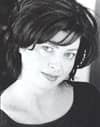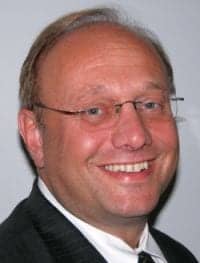
I would have liked the luxury of an MRI machine on a particular night some 30 years ago. My “episode” began when I woke at 2 in the morning with a severe headache. I thought I said, “I have a terrible headache”?but the look on my mom’s face told me I had communicated something far worse. It was days later when I learned I had been speaking gibberish.
Although the mad rush to the ER has faded away, I do recall a battery of invasive tests. Perhaps if MRI technology had been available, I could have avoided some of the more painful ones like that very memorable spinal tap. My pediatric neurologist took the time to explain to me why all of this was necessary. It was about “ruling things out.” I got it. And I got through it?thanks to the kindness of doctors.
For me, physicians have always loomed large. They’ve saved my life a few times over, and for that I am very grateful. But they’ve also played a key role in my professional career. In my previous work, as an independent marketing and public relations professional, doctors came to my rescue with the scientific facts I needed to do my job; but more than that, they inspired me.
For 9 years, I spearheaded a national asthma-education initiative for a major pharmaceutical client. The goal was to educate the public about the asthma epidemic and motivate young people to seek out proper diagnosis and treatment. Initially, for me, this was a business project. But along the way it became a mission?even a vocation.
It was the physicians?from pulmonologists to sports medicine specialists?who I worked so closely with and who put an authentic “face” on the affliction through their stories about patients. Their dedication and passion converted me from PR pitch gal to patient advocate.
The lesson: You never really know when you’re about to reinvent yourself. And there’s nothing more contagious than other people’s passion.
As the new editor of Medical Imaging and our sister publication Axis Imaging News, I’m on the threshold of all things new?for myself, but also for readers. I have much to learn about the dynamic field of medical imaging. But this I do know right now. While Medical Imaging is a publication about “product,” product means nothing without better patient outcomes. One of my goals is to put a human face on the maladies that can be diagnosed through the many modalities we cover?from MRI to PET/CT to ultrasound and nuclear medicine.
On average, one in nine Americans will undergo an MRI examination this year. What’s more, the use of ultrasound technology for early detection of ovarian cancer recently garnered front-page coverage in The New York Times. How lucky we are to live in a high-tech age where medical professionals and machines work together toward early diagnosis, proper treatment, and sometimes, even, prevention.
So let’s hear the real stories. I plan to include more case histories about patients and doctors, and how the modality made the difference in improving clinical outcomes. I’ll look to our Editorial Advisory Board to share not only their medical and scientific expertise, but their bedside stories, as well. And I invite any radiologist, cardiologist, technologist, and all of our readers to send those compelling real-life accounts my way.
They say, “a picture is worth a thousand words.” If a “picture” you’ve taken has, for example, confirmed a critical hunch you had ? or surprised you because it detected something you never expected ? or saved a person’s life, then I’ve got the thousand words to tell your story.
Marianne Matthews, editor





